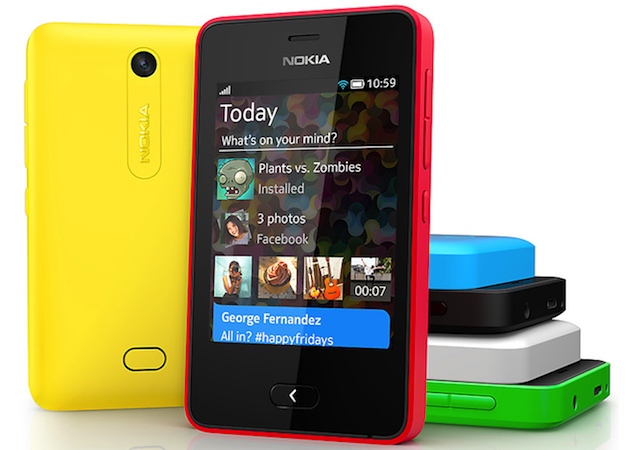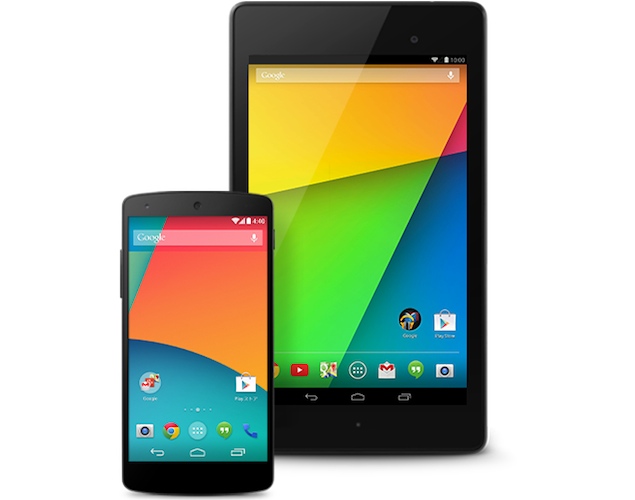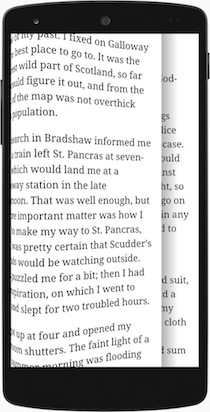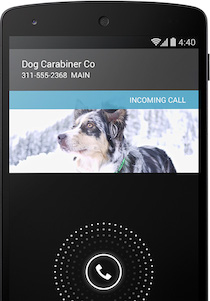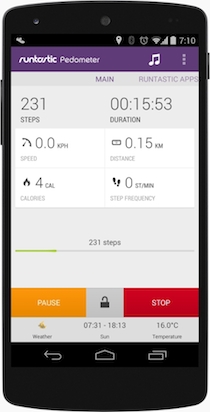Unless you're a hardcore Apple fan who's taken the time to memorize all the minor differences separating the
iPhone 5 and 5s, you're likely to mistake the two at first glance. Not only is every button and port in the same place, but the phone's measurements remain unchanged as well: at 123.8 x 58.6 x 7.6mm (4.87 x 2.31 x 0.3 inches). It even weighs the same, at 112g (3.95 ounces). Likewise, the 5s also features a 4-inch, 1,136 x 640 Retina display with a pixel density of 326 pixels per inch, a brightness rating of 500 nits and an 800:1 contrast ratio. Again, more of the same. Clearly, Apple's still satisfied with the resolution and screen size, though we wonder if the company will have a change of heart with next year's flagship.
As you're probably well aware, the 5s is to the
iPhone 5 as the 4s was to the iPhone 4 (and as the 3GS was to the 3G). All told, this is the third time in Apple's seven-year smartphone history that it's carried over the iPhone's design into a second consecutive year. Even so, the design isn't identical. Of all the enhancements made to the 5s, the most notable has to be the new Touch ID fingerprint scanner, which is embedded directly into the home button. Look closely and you'll also notice a dual-LED flash on the back, as well as the word "iPhone" in a slightly lighter font near the bottom of the rear to match the look of iOS 7. Under the hood, the 5s steps up from Apple's A6 chip to the A7, the first smartphone processor with 64-bit support. Additionally, it claims to double the iPhone 5's CPU and GPU performance, thanks in part to a new coprocessor called the M7, which is meant to relieve the main processor when it comes to measuring motion data. Lastly, the 5s introduces an improved iSight rear camera and FaceTime HD front-facing shooter, but we'll get to that later in the review.
That leaves one severely underrated improvement: the 5s'
global LTE support. In total, Apple will offer the device in four different SKUs, each designed for different regions and mobile operators. The widest-reaching of the bunch -- the A1453 -- supports 13 LTE bands, in addition to penta-band DC-HSPA, quad-band GSM / EDGE and even quad-band CDMA / EVDO rev. A / B. In fact, this version can technically work on all four major US LTE networks. Apple tells us this model will be sold locked on Sprint, but don't expect to see an unlocked A1453 in the US anytime soon -- that honor will go to the A1533 GSM version. The A1533 will come in GSM and CDMA flavors, and will be sold on AT&T, T-Mobile and Verizon. Each one will have 11 LTE bands (yes, it'll include support for all four major US LTE networks as well). Meanwhile, the A1457 is destined for Europe, while the A1530 is tailored for Asia; neither one has support for the most common US LTE bands. As a sidenote, the 5c will also be offered in four models and will support the same bands.
Rounding out the spec list, the iPhone 5s features Bluetooth 4.0, aGPS and GLONASS for navigation, dual-band 802.11a/b/g/n (no ac support this time around) and options for 16, 32 or 64GB of built-in storage. As expected, it doesn't come with NFC, wireless charging or a microSD slot. It also comes in three color options, including silver (just like on the
iPhone 5), space gray (gunmetal gray with black highlights on the top and bottom) and, of course, gold. Unsurprisingly, that gold model has received the lion's share of the attention, even since before it was officially revealed. After all that, though, it's much subtler than we ever expected. What we're saying is, while our review unit was silver, we definitely would not have minded taking one in gold.
TOUCH ID
There's a reason you don't often see fingerprint scanners in smartphones: in the past, they've proven to be unreliable, often causing more aggravation than they're worth. In particular, we're thinking of the Motorola Atrix 4G, which featured capacitive fingerprint scanner that required you to swipe your finger over the sensor, often several times, and with minimal success. But now here's the iPhone 5s, with a most intriguing -- and perhaps most controversial -- feature: its Touch ID biometric sensor. So are users in for the same frustration?
As it turns out, not really. In a clever move, Apple integrated a state-of-the-art capacitive fingerprint sensor into the home button itself and protected it with a sturdy sapphire crystal overlay. It's embedded so well, in fact, that the giveaway that it's a fingerprint reader is the silver ring encircling the sensor. That steel ring acts as a trigger, which detects your finger and then initiates the scan. Once it's activated, the sensor is capable of taking high-resolution pictures of your fingerprint from any angle, which it then sends back to the A7 chip for analysis. The images captured by the scanner show the first layer of skin beneath the dead cells sitting on top, rendered at a stunning 500 ppi.

The setup process is simple: it typically took us less than a minute for the phone to learn our prints. The phone can memorize up to five different fingers (or thumbs), and they can belong to the same person or multiple people, depending on how many friends and family members you'd like to grant access. The training process may sound cumbersome at first, but it gets easier after just a few tries. First, you start by placing your finger on the home button several times -- it usually took us six or seven repeats -- and then, once the phone has enough information, it asks you to put your finger on the button at different angles. This can be done by rolling your finger from one side to another, or lifting your finger on and off a few times. After that, you'll see the final version added to your list of learned prints -- fortunately, you can rename each one so you don't forget which one is which. In the rare case that the scanner isn't able to read your finger, you'll need to set a passcode to ensure you can still get into your phone.
Sure, fingerprint scanners are cool to geeks like us, but are they really useful, or are they just a gimmick? Perhaps they're a little of both, and besides, nobody's going to force you to use it if you prefer a standard passcode or the ol' slide-to-unlock gesture. However, Touch ID is meant to give your phone an added layer of protection (provided you didn't already have a passcode, of course) while shaving a couple seconds off the unlock process. It also comes in handy for purchasing iTunes content: you can buy apps, music, books and more without having to type the entire password in each time.
And it is indeed fast: the scanner was able to pick up all of our fingers in fractions of a second and from any angle. It's so natural, in fact, that we almost forgot that passwords and unlock screens even existed on the 5s; on countless occasions we tried to unlock the
iPhone 5 and 5c with the scanner before realizing that we had to use the "old-fashioned" slide-to-unlock method. It's not perfect, however: the scanner didn't work when our fingers were wet or only partially on the home button, although we didn't experience any problems with clammy fingers in humid conditions. (
Update: fun fact -- it also technically works with toes, though we're not sure why you would want to do that.)

There are still some privacy concerns, which Apple has addressed by stating that all of its captured fingerprints are converted into a digital signature, which is then encrypted and stored in just one specific section of the A7 chip. In other words, it doesn't get uploaded to Apple's servers or to iCloud. And -- not that we expect this gruesome a fate -- chopping off someone's fingers won't work, either; sorry, enterprising thieves, the sensor can only pick up living tissue. Additionally, you'll have to enter the passcode if your device has been rebooted, or if you haven't unlocked it in more than 48 hours.
With that said, we were disappointed to see that there isn't a way to require both a fingerprint and a passcode; a conventional string of numbers would offer an optional second security layer for those who don't yet trust Touch ID. We'd also like to see Apple open up the API, since there are plenty of app developers just waiting to take advantage of this feature.
CAMERA
Apple has always taken an interesting stance on the iPhone's imaging capabilities: make it good, but keep it simple. This is in stark contrast to Android and Windows Phone flagships, all of which boast tons of customization options, along with more unique features. Think UltraPixels, ClearPixel, PureView and so on. This isn't Apple's way, like it or not, but for people who buy iPhones, the company's imaging prowess seems more than sufficient.
Like the
iPhone 5 and 4s before it, the iSight rear camera in the 5s offers a maximum resolution of eight megapixels. However, it benefits from a larger pixel size (1.5µm vs. 1.4µm) and larger aperture (f/2.2 vs. f/2.4). Between those two improvements, Apple claims the 5s benefits from a 33 percent increase in light sensitivity. In other words, your daylight shots won't be any more detailed than they were before, but pictures you take in dimmer settings will be a clear improvement over what you're used to on the
iPhone 5. In theory, at least. But does the 5s camera live up to Apple's promises?
First, let's tackle the camera's low-light performance. The shots we took with the 5s were consistently better than what we took with the
5: they were sharper, with finer details, more natural colors and far less noise. As you might expect, our daylight shots were roughly on par, though there were a few times when the 5s won out by a slight margin, offering just a little more detail. All told, the 5s plays in the same league as all those other flagships with a bigger emphasis on imaging. Even so, our sample shots still showed more noise and less detail than the same images taken with the Nokia Lumia 1020. The 5s also does a good job of reproducing color, but it's not the best performer in this category, either. Make no mistake, though: the iPhone has been -- and continues to be -- great as a simple grab-and-go camera. It may not be a best-in-class performer, but the vast majority of iPhone users will still be happy.
iPhone 5s sample shots
The new camera also features auto image stabilization, which is designed to sharpen low-light shots by taking four images in a row, each with a short exposure time, and combining the sharpest parts of each individual shot. Thanks to the new ISP built into Apple's A7 chip, the camera's stabilization feature is just one of several improvements on the menu here. The phone can now handle burst shooting at a rate of up to 10 images per second. These pictures are then compiled into a handy folder contained within the Photo Stream; just select the edit option to open up the full spread. The phone analyzes different parameters in each picture, such as exposure, sharpness and face detection information and takes a good guess as to which ones are the best. Panorama mode is faster on the 5s as well: it now promises up to a 50 percent increase in speed, but more importantly, it's now able to adjust exposure automatically as you pan around.
As we said earlier, one of the only cosmetic changes to the iPhone is the addition of a dual-LED flash known as True Tone. The setup consists of a white and amber flash, which the phone uses to analyze the ambient color temperature and determine the intensity at which to fire each LED to match that specific temperature. As a result, our images showed more natural colors -- and that was true for both still-life shots and human subjects.
The FaceTime HD front-facing camera also received an upgrade for 2013. Like last time, it's a 1.2-megapixel shooter capable of 720p video, but the 5s features a BSI sensor with larger 1.9µm pixels and does a modestly better job of capturing light. Indeed, in side-by-side comparisons, this reviewer's face had more pronounced shadows on last year's iPhone compared to this year's.
DSLRs and flagship phones have been doing slow-motion video for a long time, but most (if not all) of them have only been able to produce footage at a maximum of 60 fps. We also haven't seen any smartphones able to switch back and forth between slow-mo and normal speed in the same movie. (Update: the HTC One actually has this ability, though not at 120fps.) Enter the iPhone 5s, which can capture 120 fps video and then lets you determine what parts of that footage are displayed in slow motion (two on-screen scrubbers make this easy). Videos uploaded and shared through YouTube will show up with your slow-mo intact, although movies transferred to your computer normally won't. We'll admit, we had a lot more fun with this feature than any human ought to have.
Video is recorded in MPEG-4 format and at a resolution of 1080p. The sample footage we caught had an overall bit rate of 16.4Mbps and 30fps frame rate. The mic picked up our voice clearly, though city noise in the background was still a little louder than we'd like. As for the videos, most of the samples we took actually looked like they were HD-quality. How 'bout that?
PERFORMANCE AND BATTERY LIFE
Ever since the first iPhone came out in 2007, Apple has declined to clarify many of its handsets' specs, often keeping them a secret until teardowns revealed the truth. The company believes there's no need to focus on those details when the user experience matters more. Of course, that doesn't mean it isn't above claiming bragging rights now and again. Case in point: the new dual-core A7 SoC embedded within the iPhone 5s.
The A7 implements the ARMv8 instruction set, which means it's the first smartphone to feature the sort of 64-bit architecture currently used on desktops. But what does this mean, exactly, and why does it matter? In the most basic terms, it means games and processor-intensive apps that support 64-bit will perform much better and won't drain the battery quite as fast; even regular apps are capable of executing operations faster, since they can take place without the processor digging into main memory. On top of this, Apple claims the A7 offers double the processing power and graphics performance as the A6. What's more, iOS 7 was built with 64-bit support in mind, allowing greater efficiency for developers. In particular, native 64-bit libraries, kernel and drivers are all included in the new firmware, and devs can start tweaking their code right away to take advantage of it.
Of course, one of the major benefits of 64-bit desktops is support for more than 4GB of RAM, which isn't something we'll be worrying about on the iPhone for a while yet -- system apps indicate that the 5s still has only 1GB. Regardless, we can't see any reason not to add 64-bit support this early in the game; most apps will enjoy a boost in performance and / or battery life, and it also encourages the competition to get into the game as well. Samsung, for instance, has confirmed that it's working on 64-bit support, and there's speculation that Android 4.4 will add native support for it as well. Whether this paves the way for a convergence between iOS and OS X, we don't know; at the very least, this makes it easier for OS X devs to transfer their apps to the iPhone (as well as the next iPad, assuming it also gets 64-bit support).
Since iOS 7 and the 5s aren't officially out yet, we haven't had the opportunity to play with any games or use apps that have been upgraded for 64-bit, but that doesn't mean we aren't already seeing the benefits of the A7. In general, the 5s is noticeably speedier; apps load faster and everything just feels zippier. The greatest improvement, however, is in gaming. Not only is gameplay smoother, but also cutaway scenes in between missions load faster and look better. As an example, we played Infinity Blade II on the iPhone 5 and then the 5s, and were amazed to see that we'd missed out on minute-long sections of the animation on the older device because of regular frame-freezes. Needless to say, this was never a problem on the 5s. On top of this, the GPU now offers support for OpenGL ES 3.0, a standard which should give game companies the ability to add more complex details and make their titles look much more realistic.
Our above impressions of the A7 were more subjective in nature, of course, so we ran a few benchmarks to show the difference between
iPhones in more quantitative terms. Take a quick look at the tables below and meet us back underneath.
| iPhone 5s | iPhone 5c | iPhone 5 |
|---|
| SunSpider 1.0.1 (ms) | 418 | 754 | 797 |
| GXFBench 2.7 T-Rex HD Offscreen (fps) | 23 | 6.5 | 6.5 |
| Basemark X (onscreen / offscreen) | 27.7 / 16.7 | 18 / 7.5 | 17.7 / 7.1 |
| 3DMark Ice Storm Unlimited | 13,729 | N/A | 5,442 |
| Geekbench 3.0 (multi-thread) | 2,562 | 1,218 | 1,301 |
| Linpack | 795 | 479 | 501 |
| SunSpider: lower scores are better. Linpack scores taken on average. iPhones tested on iOS 7.0. |
The iPhone 5 may be fast enough for some, but the 5s is significantly faster. In a few tests, the 5s performed more than three times better, while in others, it was closer to a 50 percent increase. Regardless, the 5s was the clear winner according to every single metric, whether it was CPU performance or JavaScript rendering. We also ran similar benchmarks on Android devices running the best chipsets: theNVIDIA Shield, which uses Tegra 4, and the LG G2, which is powered by a Snapdragon 800 chip. Here's how they fared:
| iPhone 5s | NVIDIA Shield | LG G2 |
|---|
| SunSpider 1.0.1 (ms) | 418 | 513 | 880* |
| GFXBench 2.7 T-Rex HD Offscreen (fps) | 23 | 24 | 21 |
| Basemark X (onscreen / offscreen) | 27.7 / 16.7 | 24.8 /12.4 | 14.8 / 12.8 |
| 3DMark Ice Storm Unlimited | 13,729 | 12,579 | 16,619** |
| Geekbench 3.0 (multi-thread) | 2,562 | 2,715 | 2,140 |
| Linpack | 795 | 680 | 611 |
| *LG G2 SunSpider score is as shown in review; US models vary. **Updated result. |
Admittedly, these tests likely have a higher margin of error simply due to the fact that they're running on different platforms. Still, looking at these results, it's quite clear that the iPhone 5s -- dual-core and all -- can not only keep up with the best Android has to offer, it may also actually beat Tegra 4 and Snapdragon 800 in certain scenarios.
The A7 isn't the only new piece of silicon finding a home inside the iPhone 5s. Apple's also thrown in a coprocessor called the M7, which is a dedicated motion tracker designed to lighten the A7's load and conserve battery life. The idea of using coprocessors for specific types of tasks isn't new: the X8 architecture found within the Moto X, and other recent Motorola handsets, features two such cores for natural-language processing and contextual computing. Apple's approach is to have the M7 control motion data from the gyroscope, accelerometer and compass inside the iPhone. Your fitness apps will take up less battery life when running in the background. Additionally, since the M7 knows when you're walking, driving or running, the iPhone won't actively search for available WiFi networks while you're in a moving vehicle.
We imagine the M7 will have far more clever applications than simply saving battery life. Here's one: navigation apps, such as Apple Maps, can sense when you stop driving and begin walking, and Maps will automatically transition your route from displaying driving directions to walking directions. We tested this claim, and got it to work as advertised; the only caveat we could see is that you'll need to walk a little while before the M7 determines that you actually are walking and not just stopping at a gas station or rest stop. This could have great benefits for indoor mapping, finding your lost car and automation (imagine the iPhone being able to sense that you've set your phone next to your bed and switching to Do Not Disturb mode automatically). The M7 may not do much yet, but developers will have access to the CoreMotion API, which means we probably won't have to wait long before we see an onslaught of apps that take advantage of that new coprocessor.
All this talk about the A7 and M7 joining forces to save power brings us to one of the more important topics of any smartphone review: battery life. Apple never publicly discusses the size of its batteries, but
Anandtech's Brian Klug
pored over the new iPhone's FCC docs and concluded that we're looking at a 10 percent increase in capacity -- a 1,580mAh (5.96Whr) cell versus 1,440mAh (5.45Whr) in the iPhone 5.
Compared to some Android flagships that doesn't sound like much, but it still amounts to a serious improvement in battery life. We started with our standard video rundown test, which entails looping an HD video at half brightness. The iPhone 5s made it through 10 hours and 50 minutes of playback -- even better than Apple's 10-hour claim -- while the iPhone 5 cut out after nine hours and 17 minutes. With heavy usage (copious email, navigation, social networking, web browsing, calls and taking pictures and videos), we managed a little over eight hours before the 5s was ready to call it quits. On a day of what we consider to be normal usage, however (this varies by user, naturally), we had no problem getting through a full workday with extra juice to spare. You'll still need to charge it up every night -- or sooner than that, depending on your use -- but its runtime is at least above average. As an aside, it only took an hour and 50 minutes for the iPhone 5s to charge to full capacity using the supplied charger.
When making calls on the 5s, our friends on the other end of the line always sounded crisp. For their part, callers told us they could barely hear traffic and city noise, even when we were talking in exceptionally loud areas. The phone quickly and easily located a GPS signal, and we never ran into any problems navigating.
SOFTWARE
The iPhone 5s (and 5c) will ship with iOS 7, and if you haven't heard, it's a doozy. The post-Forstall era looks pretty promising, but it's not going to be universally loved. Us? In general, we like it. In iOS 7, Sir Jony Ive chose to eschew the traditional skeuomorphic interface in favor of one that's flatter and more colorful. We're going to have a full review up on the site in a few days, but we'd like to at least cover some of the OS's key features now.
The actual mechanics behind the user interface have changed very little, which means that most iOS users will easily be able to find their way around the phone. The cosmetic differences, on the other hand, are drastic indeed. New fonts, icons, colors, graphics and gestures abound; the keyboard sports a new look, as do most of the core apps. Spotlight is accessible from every panel now with a small downward tug on the screen; folders can hold a lot more apps; Siri shed the beta tag and got an extra voice with a few new abilities; physics and layers add a new dimension to the UI; and you can even get dynamic wallpapers with parallax.
Our favorite improvement to iOS is Control Center, a feature that's been on our wish list for years. Instead of fumbling through multiple settings menus to find what you need, a simple swipe up from the bottom of the phone brings up a panel with toggle buttons; a brightness slider; quick-access shortcuts to flashlight, alarms, calculator and camera; and a music player widget. It's a huge timesaver, but if there's one thing we could add, it would be the ability to customize this panel to our liking.
Multitasking gets a completely new look, and as you might have heard, it appears to take cues from webOS, Windows Phone and even Sense 4. Instead of pulling up a small bar of background apps that are difficult to kill, iOS 7's method is now card-based: it lets you glance at screenshots of recent apps, which you can swipe to get rid of. Sadly, it's missing a "clear all" option, which means anyone who really cares to clean up is still left with no choice but to address items one by one or reboot the phone.
The music app received a face-lift too, but the biggest addition to the app is iTunes Radio. It's a lot like Pandora: you can listen to preset stations or create your own, and each station picks which songs are played. Just like with Pandora, you can fine-tune your preferences as you go along, but watch out for the skips -- you're only allowed to skip six songs per hour for any given station.
There's also AirDrop, which is basically a fancy name for file sharing. The feature gives you the ability to shoot pictures, videos and other files over to another iOS device in the vicinity; the icon shows up in the share menu and you can choose if you want to share files with everyone or only with people in your contacts list.
THE COMPETITION
The iPhone 5s comes in three size selections: the 16GB version is $649 unlocked; the 32GB variant costs $749; and the 64GB model is priced at $849. Most carriers in the US will offer the devices starting at $199 with a two-year commitment, though you can also choose plans that allow you to get the iPhone for free -- provided you pay installments each month to cover the full cost of the device. The 5c, which essentially has the same components as the iPhone 5 (albeit with better LTE support), will sell for $100 less, and the iPhone 4s can be yours for $0 on contract.
Naturally, the iPhone seems to be a benchmark for price comparisons, so let's see how it stacks up against some of the other flagships. In the US, the $200 16GB model has fiercer competition than it's seen in previous years. If you're not locked into the iOS ecosystem, Android has a handful of top contenders at the same price, including the Samsung Galaxy S 4, the HTC One, LG G2 and Moto X. If you're adventurous enough to consider joining the Windows Phone side, you can get theNokia Lumia 1020 on AT&T for the same price as the iPhone.
WRAP-UP
Is the 5s the best iPhone ever made? Yes, though that shouldn't come as a surprise. Apple took a good product and made it better through hardware upgrades, new features and completely revamped software. In what would otherwise be considered a mundane update to the iPhone 5, Apple somehow managed to appeal to both the geek (64-bit support, M7 coprocessor, Touch ID) and the average Joe (a fresh, colorful iOS 7), all while laying the groundwork for the company's future.
Thanks to the introduction of the iPhone 5c, potential iPhone buyers now have another option to consider. If you want the latest and greatest, the 5s is clearly your best bet. Those content with owning a device like the iPhone 5 for a lower price (and those who love the color choices) will prefer the 5c. Frankly, though, if you currently own a 5, it's hard to justify coughing up the extra cash for an early upgrade to get either one.
And what if you're not sold on iOS? If you haven't seriously considered an iPhone before, there likely isn't much in the 5s to make you change your mind. For anyone who needs copious amounts of screen space, a 4-inch display likely won't cut it, but to be fair, the 5s is the best small phone you can get -- we can't think of any other device with a display smaller than 4.5 inches that even comes close. The 64-bit support on the A7 may convince a few power users to make the transition from Android to iOS, but otherwise, the SoC is on par with what you'll find in some of the top competing smartphones. Because of this, there's not much incentive for the Google faithful to make the switch, especially if they are already invested in the Android ecosystem.
The 5s is a solid effort from Apple, but its true worth is yet to be determined. If developers come up with clever ways to take advantage of the M7 coprocessor and the 64-bit support in iOS 7, the 5s will truly shine. If not, many people might just wait it out another year.





















